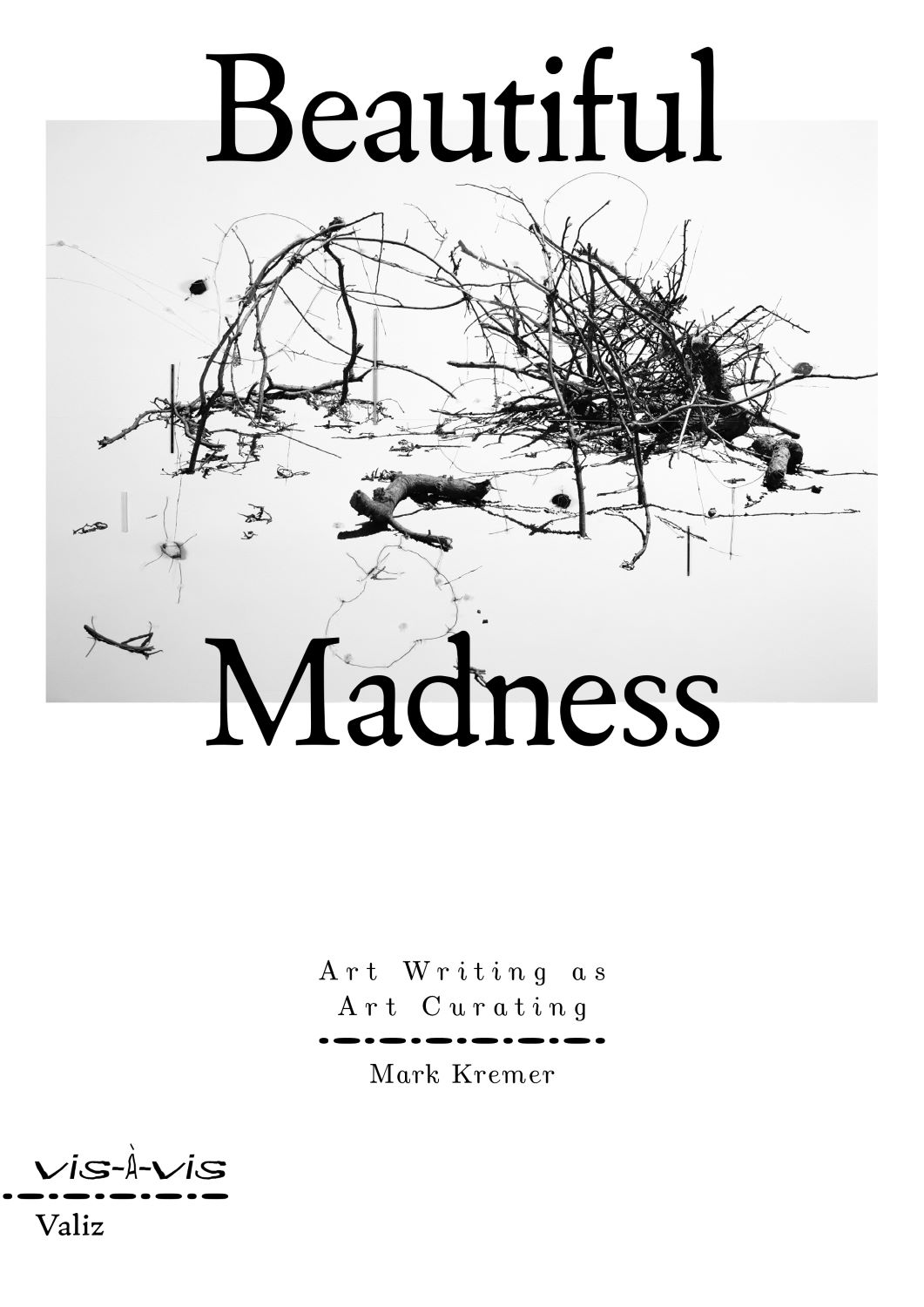Beautiful Madness
Art Writing as Art Curating

- opent nieuwe manieren om naar kunst te kijken, erover te schrijven en het te begrijpen
- een bundeling van 28 teksten over kunstenaars en hun werk, met als thema: wat schrijven en cureren in de kunst betekenen, en hoe ze op elkaar inwerken.
Auteur: Mark Kremer
Bevat werk van: Absalon (Meir Eshel), Tiong Ang, Christiaan Bastiaans, Harmen Brethouwer, Hugo Canoilas, Lutz Driessen, Helmut Federle, Alicia Framis, Wineke Gartz, Rob Johannesma, Joan Jonas, Mike Kelley, Esther Kläs, Klaas Kloosterboer, Job Koelewijn, André Kruysen, Jos van Merendonk, Almagul Menlibayeva, Aernout Mik, Pieter Laurens Mol, Astrid Nobel, Jan van de Pavert, Roee Rosen, Roland Schimmel, Rirkrit Tiravanija, Lorelinde Verhees, Jeff Wall en vele anderen
Ontwerp: Sam de Groot
Serie: vis-à-vis
Ondersteund door: De Gijselaar-Hintzenfonds, Jaap Harten Fonds, Mondriaan Fonds
2025, Valiz | pb | 416 blz. | 23,4 x 16,5 cm (h x b) | Engels | ISBN 978-94-93246-36-2 | € 28,50
Mark Kremer (b. 1963, NL) is een onafhankelijke curator en schrijver. Hij studeerde kunstgeschiedenis, vergelijkende literatuurwetenschap en film studies. Sinds 1987, heeft hij gewerkt in en met diverse kunstinstituten en -opleidingen en cureerde hij vele tentoonstellingen.
Het cureren van en schrijven over kunst zijn nauw verwant: beide activiteiten creëren betekenisvolle narratieven over kunstwerken en kunstenaars, beide gaan een dialoog aan met een publiek van kijkers/lezers. En beide creëren ruimte om kunst te ervaren. Curatoren en kunstschrijvers putten ook beiden uit de primaire bron: de levende kunstenaar, hun werk en wereld. Een essentieel instrument voor beiden is de dialoog met de kunstenaar. Hun nabijheid tot makers stelt hen in staat om zich te verdiepen in artistieke processen en dingen te beschouwen in een staat van wording. Beautiful Madness beschouwt curatoriële praktijken en kunstschrijven als creatieve processen met als kern een toewijding aan zowel kunstenaars als hun werk. Het boek viert cureren en schrijven als processen waarbij intuïtie en intellect een rol spelen, om terrein te creëren dat uitnodigt tot een intieme ontdekkingsreis naar kunstwerken en kunstenaars.
Mark Kremer werkt sinds decennia samen met kunstenaars. Beautiful Madness verzamelt zijn schrijven over hedendaagse kunst (1993–2023). Het bundelt stukken langs de lijnen van affiniteit, thema’s en houdingen, gestructureerd in vijf onderwerpen: Spoor; Gebaar; Essentie; Polyfonie; Vastberadenheid. Het weerspiegelt zijn ervaringen met het cureren, schrijven en denken over kunst en is van waarde voor iedereen die zijn pen wil scherpen en de betekenis van cureren wil heroverwegen.










